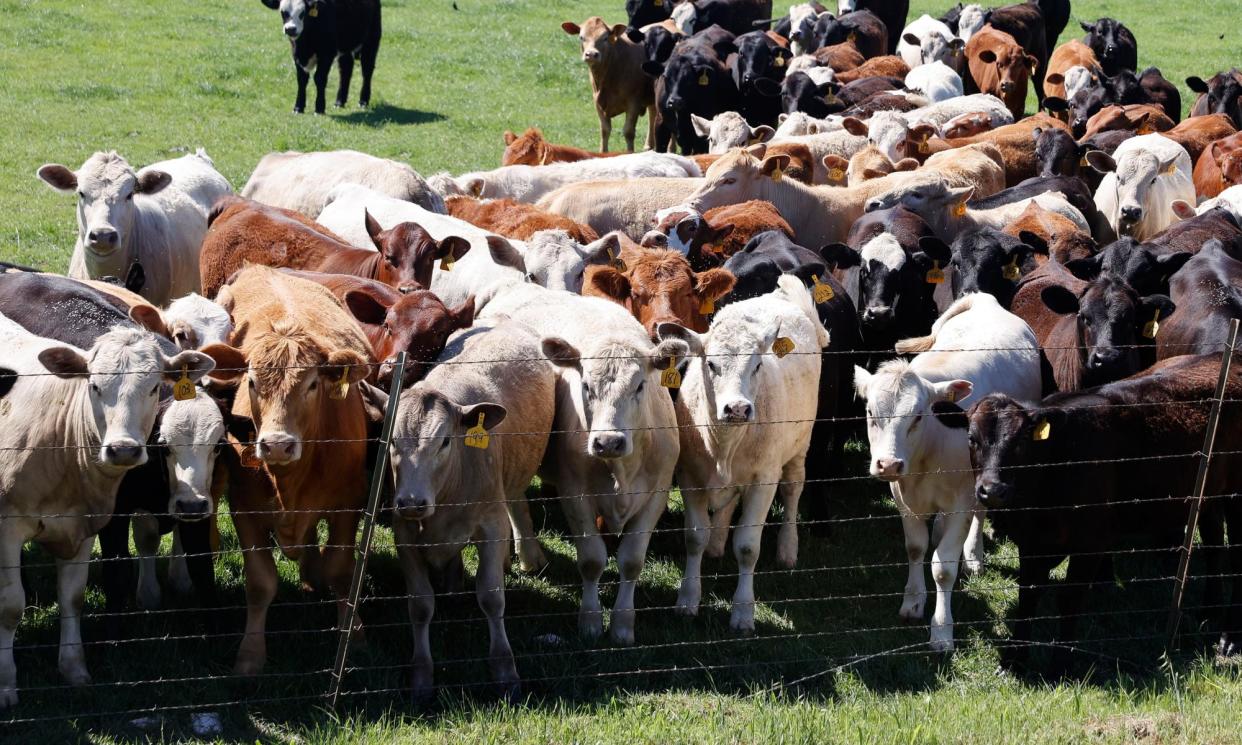Avian flu said to hit over 40 cattle at Minnesota farm: ‘Only a matter of time’

The outbreak of avian flu in US cattle herds was reported to have reached Minnesota on Thursday when the state’s board of animal health said a farmer had reported more than 40 cows with signs of fever.
The animals were tested on Monday and the US Department of Agriculture’s (USDA) national veterinary services laboratories confirmed the positive test.
The entire herd has been quarantined for 30 days to reduce the risk of the virus spreading off the farm and milk from the sick cows disposed of, the Minnesota state board of agriculture said.
State veterinarian Brian Hoefs said the herd was recovering and noted that “it was only a matter of time before this detection would reach our doorstep”.
A multistate outbreak of H5N1 bird flu in dairy cows was first reported in herds in Kansas and Texas in March, marking the first time bird flu viruses had been found in cattle.
The following month, the US Centers for Disease Control and Prevention confirmed a person had contracted H5N1 from exposure to dairy cows presumed to be infected in Texas. Last month the agency reported additional cases in humans exposed to infected cattle.
More than 80 dairy herds are now reported to have been infected across 11 states since late March, with three dairy workers testing positive, including two in Michigan. The virus is not believed to have acquired the ability to transmit infections between humans.
However, health officials in Mexico last month confirmed a fatal case of human infection with avian flu H5N2, a virus that has been reported in poultry in Mexico. The World Health Organization assesses the current risk to the general population posed by this virus as low.
Confirmation that H5N1 had reached Minnesota is likely to trigger more testing, Hoefs told Reuters. “Once this news gets out, then it kind of triggers other farms to consider doing the testing if they were on the fence prior,” he said.
Other states that have reported infected herds outside of Texas, Kansas and Minnesota are Colorado, Idaho, Iowa, Michigan, New Mexico, North Carolina, Ohio and South Dakota.
The USDA has said that the vast majority of cows recover from the illness. Reuters found that some cows with avian flu have died or been slaughtered by farmers after not recovering, suggesting that the outbreak in cows could take a greater economic toll than outbreaks in poultry because cattle cost more to raise.
The agriculture agency said last month that bird flu virus particles have also been found in beef tissue taken from a dairy cow sent to be slaughtered for meat, but that meat from the animal did not enter the food supply.
In South Dakota, a 1,700-cow dairy sent a dozen of the animals to slaughter after they did not recover from the virus, and killed another dozen that contracted secondary infections, the news agency found.
“You get sick cows from one disease, then that creates a domino effect for other things, like routine pneumonia and digestive issues,” said Russ Daly, a veterinarian and professor with South Dakota State University.
Michigan has more confirmed infections in cattle than any state. In Colorado, dairies have reported culling cows with avian flu because they did not return to milk production. Meghan Harshbarger, Ohio department of agriculture spokesperson, said infected cows were mostly due to secondary infections.

 Yahoo News
Yahoo News 
